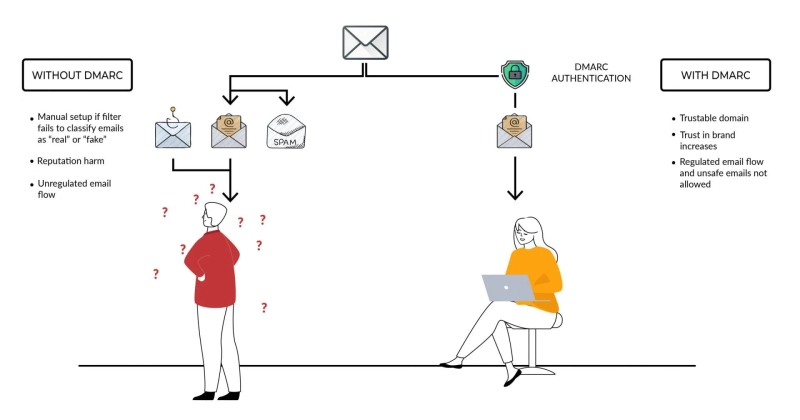Some identity management protocols, such as multi-factor authentication, have seen modern advances in recent years. Others, like email authentication, are still stuck in the 1990s. Email remains the most popular form of communication, both for personal and business purposes. It makes email a popular target for cybercriminals, who use it to launch phishing attacks. DMARC (Domain-Based Message Authentication Reporting and Conformance) is a policy that helps organizations protect themselves by validating their email senders. It acts as an identity check for the domain of your organization.
What is it?
DMARC is an email policy, protocol, and authentication system. Implementing DMARC allows cybercriminals to identify phishing emails that have been spouted by verifying the sender\'s identity. DMARC allows senders and recipients to prove that their messages have been protected. It also tells them what to do if the authentication method fails. It was created in 2012 to combat email fraud and provide authentication information. It\'s now used by many major websites and organizations, including Gmail and Facebook.
How DMARC works
A DMARC policy is a way for senders to show that their emails are protected and tell the recipient what to do if authentication fails. DMARC uses DKIM and SPF to verify the identity of an email message. It then follows a set of rules to deliver valid messages and reject or quarantine spoofed ones. It reduces the potential for malicious messages (phishing and spoofed spam) reaching your inbox. According to the Global Cyber Alliance, DMARC policies are currently protecting over 4.8 billion global inboxes.
Cybersecurity benefits of DMARC
A DMARC policy can protect against domain spoofing, which is a common vector of phishing attacks. It cannot stop all forms of phishing, such as cousin domain attacks that use similar domains or display name abuse. DMARC can also be helpful with:
* Brand protection by stopping spammers and phishers using valid organization names
* Increased delivery of valid messages
* Visibility reports provide information about unauthorized systems sending emails to the domain of the organization.
Getting started with DMARC
To ensure that DMARC is correctly implemented, IT security teams should collaborate with organizations. It is a critical cyber defense practice to prevent phishing attacks and ensure your organization\'s integrity in sending emails. All you need to know about DMARC policies in your company will be covered.
Original source: https://medium.com/@rawatnimisha/how-dmarc-advances-email-security-31f7debec04a



